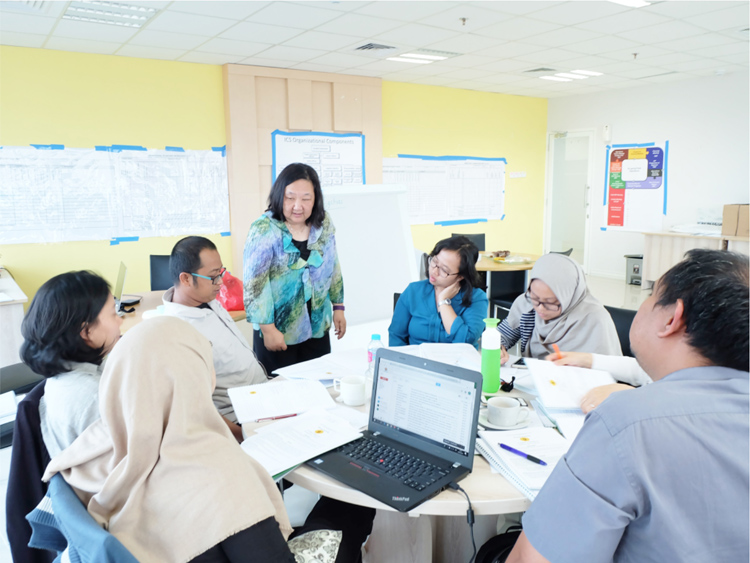
INCIDENT COMMAND SYSTEM
AND INCIDENT ACTION PLANNING WORKSHOPS
JAKARTA, 16-27 APRIL 2018
During April 2018, the AHA Centre, with the support of the United States Forest Service (USFS), successfully conducted intensive trainings regarding the Incident Command System and Incident Action Planning.
The Incident Command System (ICS) model, first developed in the 1970s in the aftermath of wildfires in California and Arizona, encourages the use of a standardised management system to enable a synergised inter-agency collaboration when responding to an emergency. To date, ICS has been developed and adjusted to address various complexities and types of emergency responses, including during the first attack of the World Trade Centre in 1993. Alongside this, ICS is also applicable for managing non-emergency situations – such as public events which attract massive crowds – including sporting events, annual festivals, parades and concerts.
While ICS covers the basic principles of cross-sectoral coordinating mechanisms, Incident Action Planning (IAP) provides in-depth knowledge for the planning department of the AHA Centre whenever a need for disaster-response arises. The IAP trainings involved
case studies in which the AHA Centre’s staff were challenged to practice their skills, use their creativity, and draw on their knowledge to develop strategies to address various disaster scenarios, including landslides, floods, and fires. The evolving scenarios required continuous efficient response plans, factoring in analysis from available resources, logistical aspects, and also safety and security.
Both ICS and IAP have been adapted and utilised by the AHA Centre since its establishment as the coordinating agency for humanitarian assistance in Southeast Asian region. The dynamic nature of ICS has been effective for the Centre’s emergency operations, due to its flexibility and adjustability to suit a range of responses. The ICS system has also been adapted and is currently used by five ASEAN Member States, creating coordination and a common ground for the ever-growing regional collaborations in managing disasters.
Written by : Shintya Kurniawan | Photo : AHA Centre


